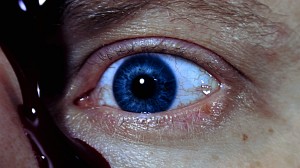By Paolo Benetazzo
Push The Boundaries of Your Creativity: How I Made the Film Study
Filmmaking is my day-long obsession, joy and torment
When you can’t see the line between fiction and reality, filmmaking becomes your lifestyle.
I was a psychology student when I came up with the concept behind my feature film directorial debut Study. During my final year at university I was involved in a number of film projects, including short films and documentaries. I didn’t have full artistic control. I had to compromise my vision for the sake of the team and that was the only way to get it done.

When you don’t want to share your vision with others I think you’re ready to make your full-length film, no matter what your budget is. I would rather make a low budget film instead of collecting short films or waiting for the great opportunity that might never come. It’s going to be risky, painful and insane but that’s how real indie films are made.
I’m a self‐taught filmmaker, I’ve never attended a film school. Watching films along with real life experience represents the film school par excellence in my opinion. Films are the greatest teachers of all; they are an endless source of learning.
The Open Screenplay
Fascinated by the study of psychology and its impact on modern life, I decided to explore my studies in a feature film. Once I graduated in Psychology, I moved to Ireland where I started writing the script in English.



 As every facet of the film industry has experienced, the digital era has drastically shifted the economics of how films are produced, marketed, and distributed. Camera technology has reached a level that provides filmmakers at any stage of their career the ability to produce content with the potential of landing a fruitful distribution deal as the world has witnessed with films such as Beast of The Southern Wild, Like Crazy, Another Earth, and Martha Marcy May Marlene – all produced at 1M or under and distributed theatrically through studios.
As every facet of the film industry has experienced, the digital era has drastically shifted the economics of how films are produced, marketed, and distributed. Camera technology has reached a level that provides filmmakers at any stage of their career the ability to produce content with the potential of landing a fruitful distribution deal as the world has witnessed with films such as Beast of The Southern Wild, Like Crazy, Another Earth, and Martha Marcy May Marlene – all produced at 1M or under and distributed theatrically through studios. 

